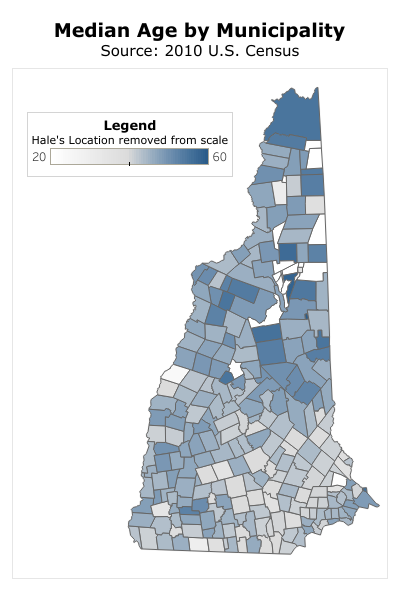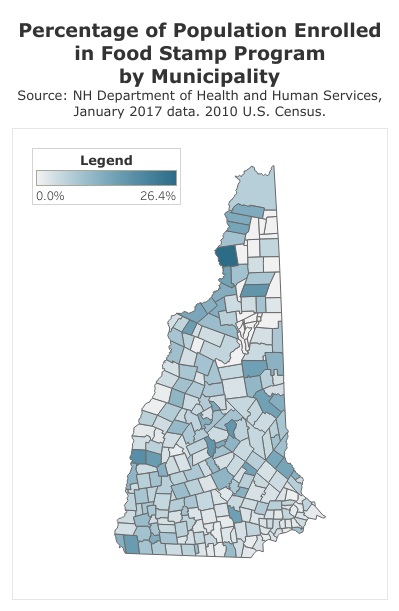New Hampshire’s economy continues to grow overall, but significant disparities in economic conditions and service needs exist within the boundaries of the Granite State. Differences between the southeastern part of the state and the more rural northern and western regions can be identified broadly and are present across many different indicators. However, experiences in local communities can vary widely even within regions, as many services are delivered at the local level.
NHFPI’s new Issue Brief, Measuring New Hampshire’s Municipalities: Economic Disparities and Fiscal Capacities, explores measures indicating the differing experiences of these communities. Interactive maps showing many of these measures are available through NHFPI’s Data Viz posts.
Certain data from the U.S. Census Bureau describe demographic characteristics at the municipal level, including populations and median ages, which vary considerably between the more urban southeast and rural western and northern New Hampshire.
Enrollment statistics from several key programs, including Medicaid and the New Hampshire Food Stamp Program, provide insights into the varying levels of poverty and need between localities. Different measurements of income and property wealth also provide indications of the abilities of cities and towns to raise revenue for local services.
Examining municipal-level data show that there are certain noteworthy exceptions to regional trends. Disparities within both Hillsborough County and Merrimack County highlight the differences between the state’s major urban centers, the suburban communities immediately adjacent to them, and the smaller cities and rural towns still within the same counties. Southwestern Grafton County includes certain high-income areas while much of the rest of the county has relatively lower incomes and higher anti-poverty program enrollment.
This Issue Brief uses data at the local level to show the disparities in economic conditions and fiscal capacities of municipalities within and between different regions of the state, and discusses the impacts these disparities may have on the ability of local governments to provide needed services in New Hampshire communities. The report examines differences in the number and age of populations across the state, the property valuations of different communities, median household incomes and concentrations of higher-income earners, and Medicaid and Food Stamp enrollment by municipality.
Maps in this Issue Brief are also presented in an interactive form through NHFPI’s Data Viz posts:
- Geographic Distribution of the Population
- Median Age by Municipality
- Property Wealth by Municipality
- Ten Years of Municipal Median Household Income Estimates
- Incomes Over $100,000 by ZIP Code
- Medicaid Enrollment by Municipality
- Food Stamp Program Enrollment by Municipality
You can learn more about the overall New Hampshire economy in NHFPI’s June 4 Issue Brief New Hampshire’s Economy: Strengths and Constraints.


